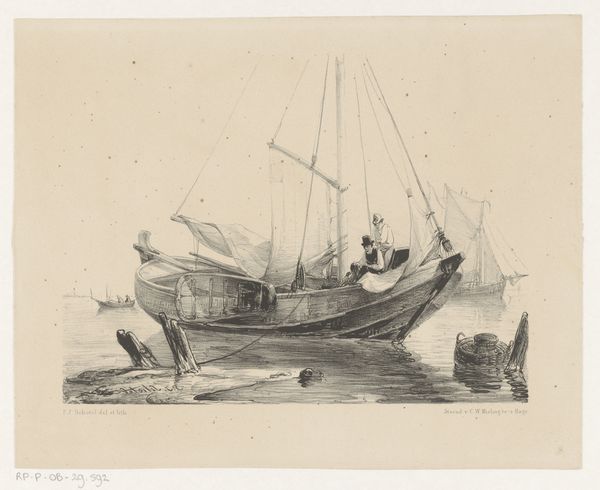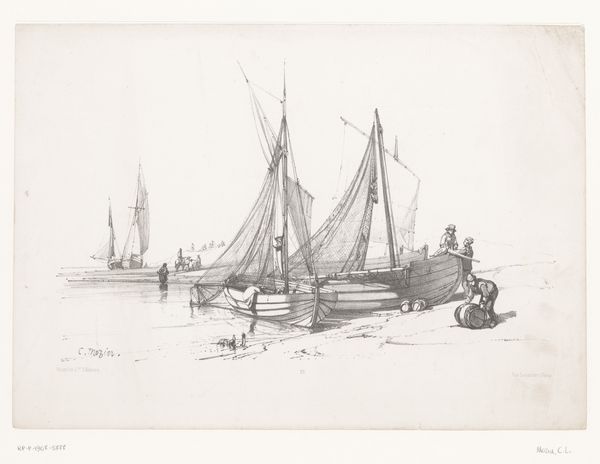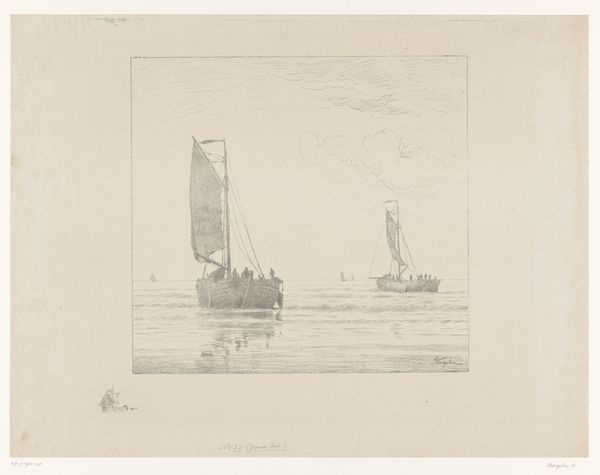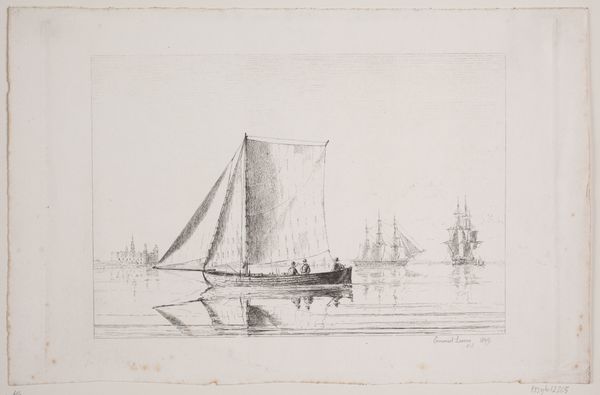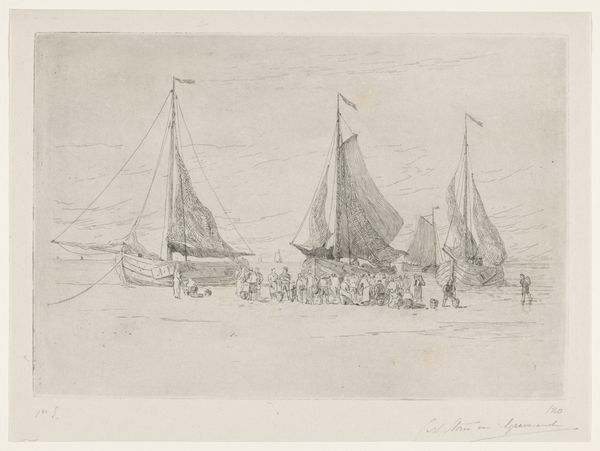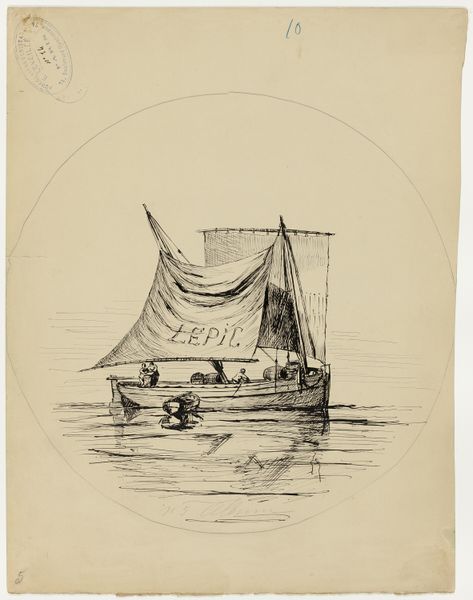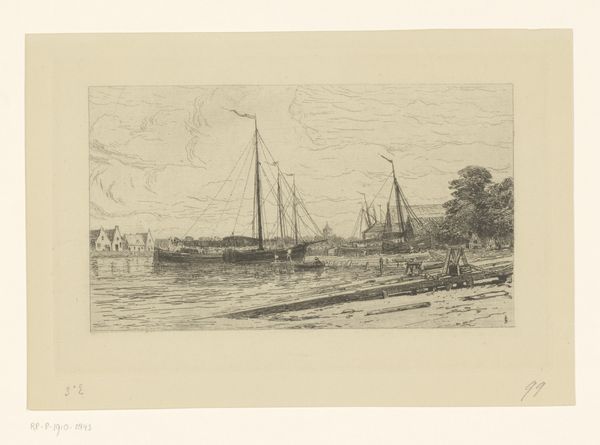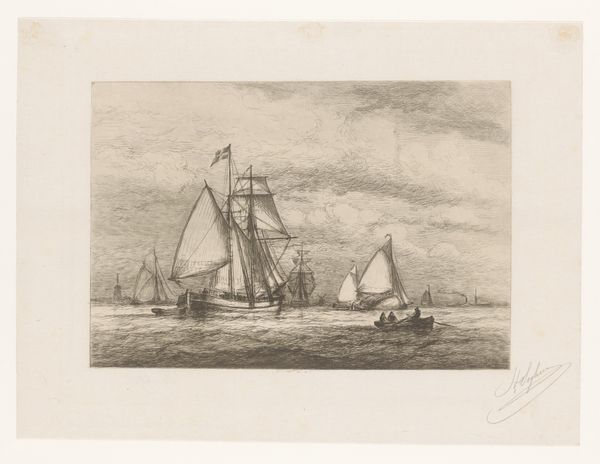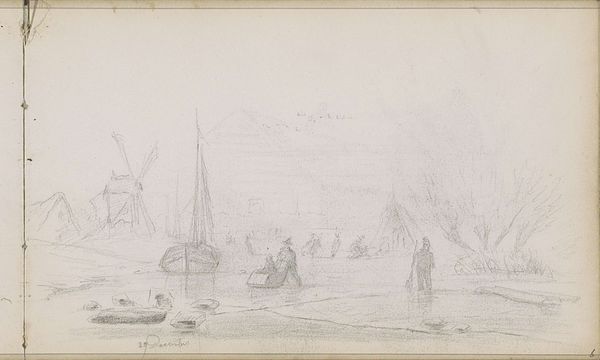
Vaartuig bij strand en Alfoeren, Aru of Kai eilanden, Zuidoost-Molukken 1824
0:00
0:00
drawing, pencil
#
drawing
#
pencil sketch
#
landscape
#
figuration
#
romanticism
#
pencil
#
watercolour illustration
#
watercolor
Dimensions: height 312 mm, width 402 mm
Copyright: Rijks Museum: Open Domain
Curator: This pencil drawing, created in 1824 by Adrianus Johannes Bik, is titled “Vaartuig bij strand en Alfoeren, Aru of Kai eilanden, Zuidoost-Molukken,” now held at the Rijksmuseum. Editor: There's a distinct melancholic feeling, evoked, I think, through the almost monochrome palette and delicate, fading lines. The artist skillfully creates depth despite a relatively simple composition. Curator: Indeed, the restricted use of pencil, primarily focusing on tonal variation rather than bold strokes, underscores its Romanticism. Note how the horizon line meets at an elusive, though classical vanishing point. Editor: My eye is drawn to the timber work and simple crafting of the boat itself. We are getting an authentic record, I suspect, of both local shipbuilding techniques and the everyday lives dependent on them. Curator: Precisely. Bik employs the traditional Western art form of the pencil drawing not merely to represent but almost to categorize and contain his perceptions of this eastern locale, and those aboard it. Editor: Categorization requires labor, and I’m keen to think about that craft—both the hands making that vessel from found material and the hands of Bik wielding pencil over paper in tandem. What labor is captured and left out of frame? Curator: An astute point. There is, of course, the undercurrent of colonial exploration, in which the inhabitants are carefully placed as "local color" within the vista rather than actors or authors of the setting. Note how all figures direct their gaze *away* from the implied gaze of the colonial viewer. Editor: And their material existence depends directly on the immediate landscape. The wooden hull, the woven sail — this resonates so strongly, and reminds me how frequently images like this omit the intricate and local modes of material making in favor of aesthetic wonder. Curator: So while the artwork utilizes conventions of European landscape traditions to depict its subject, you are focusing on its record as physical artifact? Editor: Absolutely. These marks remind me that landscapes are only rendered and interpreted from specific locations, not born as picturesque views. I like being reminded about material culture. Curator: Thank you, your insights illuminate facets perhaps unnoticed within its pictorial presentation. Editor: My pleasure. I always appreciate artwork that leads me to consider both material existence and what is visually displayed to a certain audience at a given point in history.
Comments
No comments
Be the first to comment and join the conversation on the ultimate creative platform.
